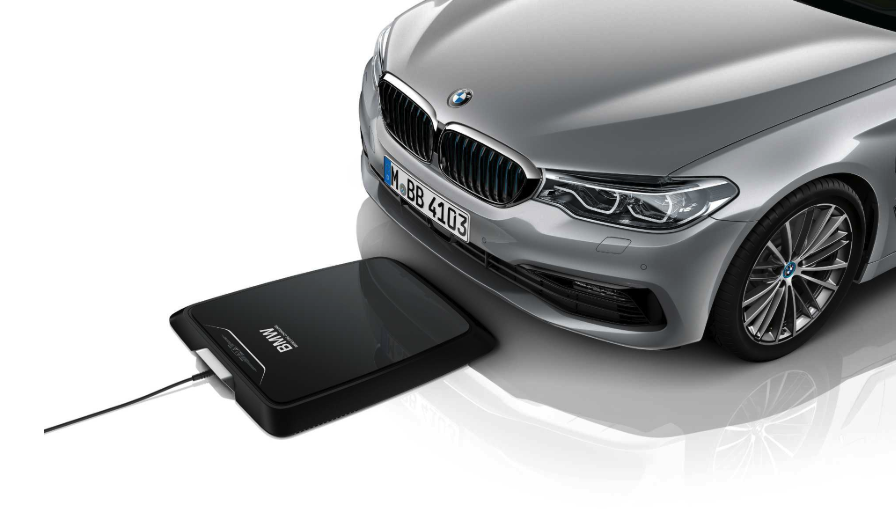We will not stop until every car on the road is electric – Elon Musk

The world is going wireless. The Internet has become wireless, our phones became wireless, phone charging became wireless. So, why
In this article, let us discuss some basics about the wireless charging working principle, advantages, disadvantages, know about some innovative companies working in this field and my thoughts on this technology.
Now, let us discuss on how the wireless charging works ?

- The car approaching the control panel wakes up the wireless charging station automatically.
- Once the car reaches the parking pad, the vehicle adaptor and parking pad with being at the vicinity.
- Control panel sends the electricity to the parking pad.
- Coils in the parking pad turn electrical energy to magnetic energy that can be transmitted to the vehicle adaptor.
- Vehicle adaptor again converts the magnetic energy to electrical energy and feeds it to the electric car battery.
- In this way, once the vehicle adaptor of the car is moved above the parking pad the wireless charging starts using inductive technology and without any physical connection.
This kind of charging can be implemented in residential areas, parking lots, on-street parking areas and also dynamic charging while travelling.
Advantages of wireless charging
- Convenient – Just park your car nearby the charging station and go shopping. By the time you are back, the car would be charged and you just can drive back home without hassles of plugging or unplugging heavy charging connectors
- A necessity due to climate conditions – in the places where the temperature would be at -20 degrees Celsius. This technology would always be helpful as one wouldn’t need to come out of the car to plug the charging connector.
- Risk of forgetting that car is plugged and starting the vehicle. Wireless charging doesn’t have this risk as no physical connection.
- Can be charged irrespective of the connector compatibility with just the mutually compatible wireless charging system.
- Increase more opportunities to autonomous features as Hyundai recently launched their wireless charging stations with auto parking feature. O
nce the car is fully charged it will automatically move to another vacant position in parking and let other cars to charge at that place.
Disadvantages of wireless charging
- High cost – This technology being in the nascent stage, still the cost of wireless charging is more
- Less efficient – Being low efficient charging process, which means considerable energy is lost for each car. Hence cumulatively a huge energy loss can be expected after mass implementation of this kind of wireless charging stations.
- Low charging capacity compared to the existing cable charging technology
- Hazardous strong electromagnetic field which may be harmful to the people around. This field also interferes with the other electronic devices around.
- Complicated power electronic circuitry and design because of the power transfer due to induction technology.
- Additional weight on the electric car to facilitate the wireless feature. This is because the car should have an adaptor to facilitate the wireless charging.
Based on my research, I would like to share some companies already innovating
EVATRAN Plugless, a USA based company have developed wireless charging systems for electric cars like Tesla S, BMW i3, Nissan Leaf and Gen 1 Chevy Volt with a power range of 3.6kw to 7.2kw. Details about their products – Click here
ElectRoad, an Israeli startup working on the charging technology that recharges vehicles as they travel on the road using the underground electric coils with easy retrofitting. ElectRoad’s copper-and-rubber electromagnetic induction strips are installed inside an 8-centimetre trench in the asphalt. From digging to repaving, the process can be completed on a one-kilometer stretch in half a day. YouTube video – Click here
Witricity, a wireless charging company born out of Massachusetts Institute of technology claims to have 90 ~ 93% efficiency with a charging power of 11kw and above which suits for charging at residential places. Details of their products can be seen at the company’s official website – Click here. Qualcomm Halo is the nearest competitor to them with the similar product line in the magnetic resonance technology.
Sciyent, a start-up based in Zurich, Switzerland, develops wireless charging devices for light electric vehicles (LEVs) such as pedelecs, e-bikes. e-mopeds, e-wheelchairs. Self-contained charging module. These chargers can be integrated at the original equipment manufacturer or as retrofit the after-sales market. The power range of 500 W, 24-36 V, 5 amperes and claims to have 92% transfer efficiency. These chargers suitable for Public charging infrastructure, Streets, bike stands, garages, homes, offices, shopping centres, Bike sharing systems. More details at Click here
WAVE, Wireless advanced vehicle electrification, developer of inductive charging stations for medium and heavy-duty vehicles. They have wireless charging system of 50 kW and 250 kW. WAVE’s inductive charging systems. Details at Click here
Hyundai
Toshiba developed a 44kW wireless system feeds power to
My thoughts
After carefully analysing the pros and cons of wireless charging technology, I feel that this technology has got a future opportunity based on the recent trend of the automotive industry moving towards autonomous cars with user comfort & safety as the top priority. But owing to the higher technology cost, it may be suitable for luxury car segment only. In order to get this technology appreciated by the mass market, it has to overcome the cost and efficiency issues which needed further research and technology development.
If any suggestions or questions, Don’t hesitate to message me on any of the below social media sites, I would answer you soon.
Alternatively, you are welcome to contact me on murali(at)murali(dot)today
Linkedin – @umkev
Twitter – @umkev
Facebook – @murali.today
Instagram – @umkev
Weibo – @umkev
Note: The article is totally my own thoughts and not necessarily anyone needs to agree with my thoughts and ideas.
